This blog post will explain the differences between Virtual-RAN (VRAN) and Open-RAN (ORAN) in mobile networks and their meanings.
This is an overview of RAN (Radio Access Network) virtualization and RAN technology interface Opening (ORAN), which are progressing in mobile network market. VRAN and ORAN are different concepts. In the 5G Network market, RAN virtualization and RAN technology interface Opening (ORAN) are progressing at the same time. This blog post describes a summary of this mobile network trend.
What are VRAN and ORAN? What is RAN Virtualization?
RAN is a 5G or 4G mobile network “Radio Access Network”. 5G and 4G mobile networks are broadly divided into radio access networks (RAN) and core network. (See the figure below)
RAN is a network for controlling wireless communication between mobile phones (smartphones) and base station antennas. As shown in the figure below, 5G Network (SA: Sand Alone) consists of several different devices.
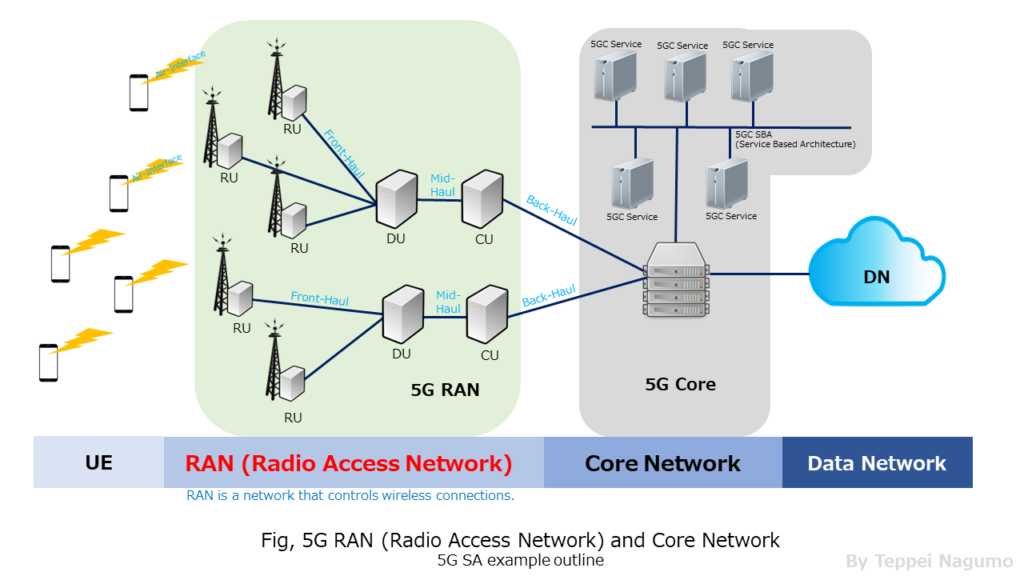
- [Glossary]
- RU: Remote Unit
- DU: Distribution Unit
- CU: Cauterized Unit
- DN: Data Network
- UE: User Equipment
In the RAN part of the mobile network, it is necessary to install base stations (RU: Radio Units) in many places in order to secure wide area where communication is possible. Therefore, RAN is a very costly part of the mobile network. In mobile networks, 60-80% of total cost of ownership of a network is in the RAN. (See Samsung White Paper below)
Samsung, Open Radio to 5G, [White Paper, PDF file]
Please refer to the following articles for the differences in RAN deployments such as CRAN (Centralized-RAN) and DRAN (Distributed-RAN).
The telecommunications carrier (operator) has made significant cost reductions by virtualizing the core network. NFV (Network Function Virtualization) and SDN (Software-Defined Networking) were adopted, an ecosystem of software and hardware was built, and the core network was virtualized. Virtualization is also progressing in the RAN area.
If you want to know more about 5GC (5G Core), please refer to the following blog post.
What is VRAN(Virtual-RAN) and ORAN(Open-RAN)? What is difference?
VRAN and ORAN are different concepts. In the 5G Network market, RAN virtualization (VRAN) and RAN technology interface Opening (ORAN) are progressing at the same time.
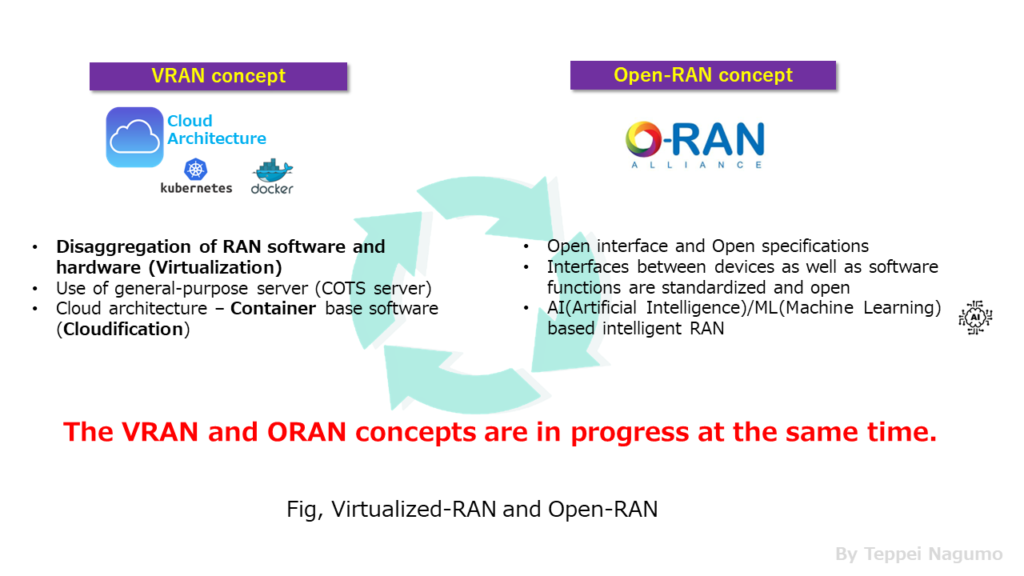
ORAN started with the opening of the front hole specifications, and the RAN specifications are being opened and standardized. ORAN is more progressed in the market than VRAN. (See, from Dell’Oro Group Press Release)
Dell’Oro Group, Press Release, Sept-3, 2021, Open RAN Forecast Revised Upward, [Web Page]
What is VRAN(Virtual-RAN)?
A RAN that handles software and hardware separately (HW & SW disaggregation) is called a virtualized RAN (VRAN). This is called RAN Virtualization. VRAN uses a general-purpose server (COTS server: Commercial Off-The-Shelf server) instead of a proprietary dedicated device to perform RAN baseband processing.
In VRAN, the software uses a virtualized environment. A container environment or a virtual machine (VM) is used in VRAN as a software platform. In this way, cloud-based technology has come to be used in the RAN area due to RAN virtualization. This is called RAN Cloudification.
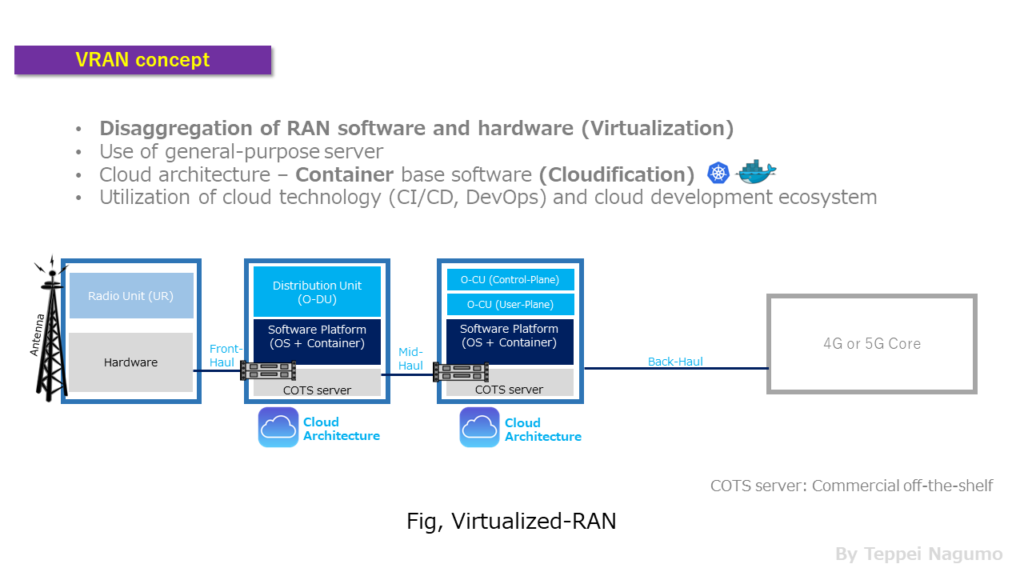
What is ORAN(Open RAN)?
ORAN means Open RAN. An organization called O-RAN alliance is promoting the opening and standardization of RAN interface technical specifications. The figure below shows the concept of ORAN.
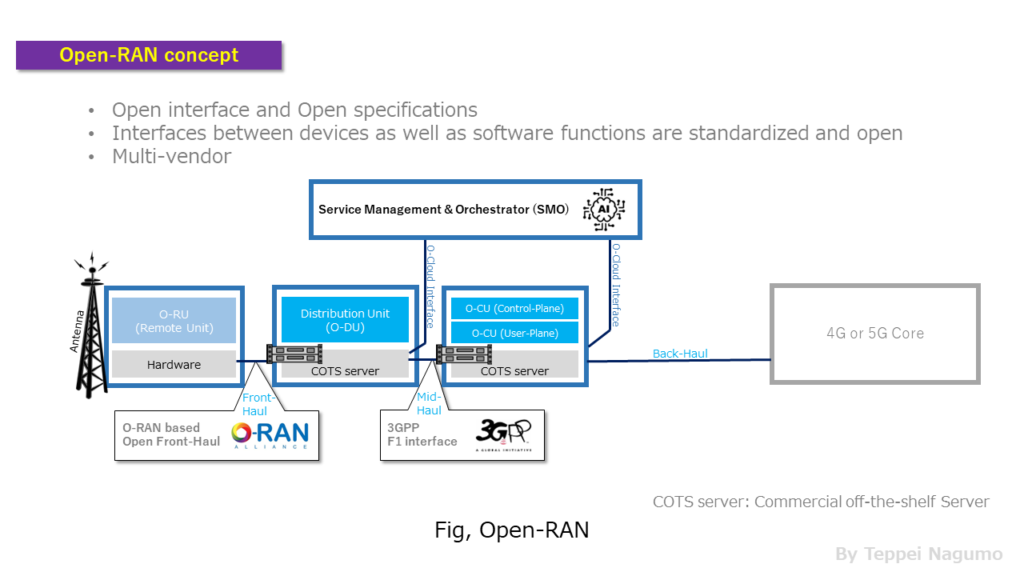
The O-RAN alliance is an organization that aims to make the next generation RAN more scalable, more open and intelligent. O-RAN alliance is an organization composed of telecommunications carriers and telecommunications equipment vendors.
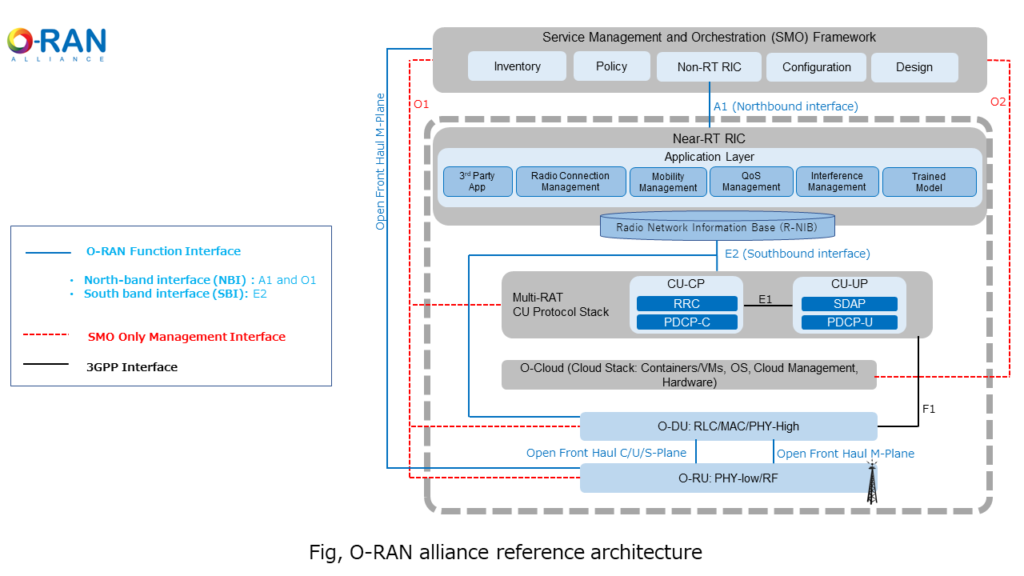
- [Glossary]
- CU-CU: Central Unit – Control Plane
- CU-UP: Central Unit – User Plane
- O-Cloud: Orchestrator and Cloud Platform
- O-DU: ORAN – Distributed Unit
- O-RU: ORAN – Radio Unit
- MAC: Media Access Control
- PHY: Physical Layer
- RLC: Radio Link Control
- RRC: Radio Resource Control
- SDAP: Service Data Adaptation Protocol
- UP: User Data Plane
- CP: Control Plane
- M-Plane: Management Plane
- SMO: Service Management and Orchestration
The technical specifications being standardized by the O-RAN alliance are synchronized with major standardizations such as 3GPP (3rd Generation Partnership Project) and ETIS (European Telecommunications Standards Institute), and are not duplicated.
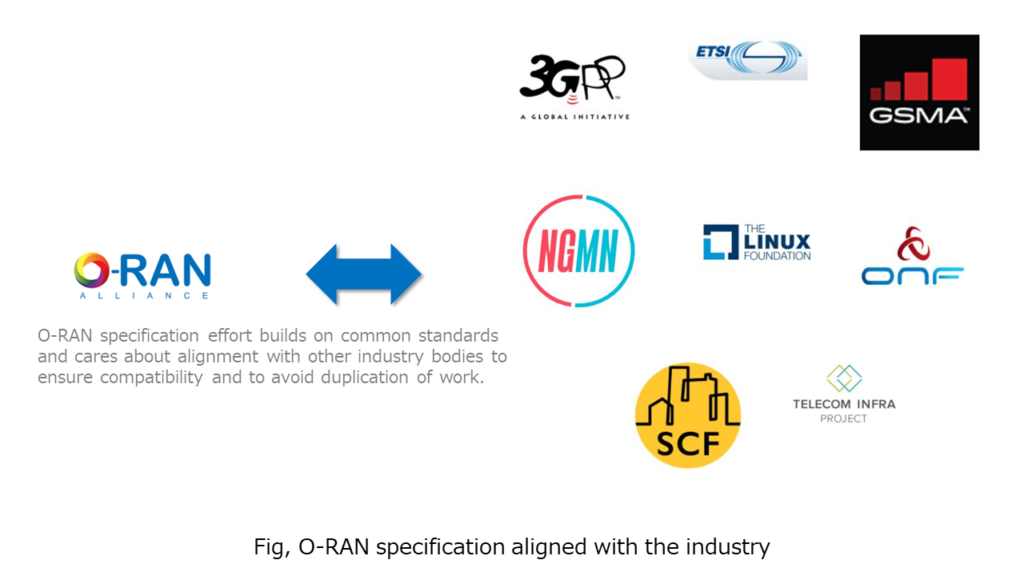
- 3GPP (Third Generation Partnership Project), [3GPP Web site]
- ETSI (European Telecommunications Standards Institutes), [ETSI Web site]
- GSMA (Global System for Mobile Communications), [GSMA Web site]
- NGMN (Next Generation Mobile Network Alliance), [NGMN Web site]
- The Linux Foundation, [The Linux Foundation Web site]
- ONF (Open Network Foundation), [ONF Web site]
- SCF (Small Cell Forum), [SCF Web site]
- TIP (Telcom Infra Project), [TIP Web site]
Please refer to the following articles for details on the opening of the Network and the activities of ORAN alliance.
Evolution from Traditional RAN to ORAN and VRAN
In the past, only a limited number of global giant vendors (ERICSSON, NOKIA, HUAWEI, Samsung, etc.) developed RAN-specific custom products and provided them to carriers (operators). Therefore, most of the interfaces between RAN devices and the software specifications of RAN were never opened.
However, due to the trend toward ORAN in the RAN area market, the RAN interface and technical specifications are becoming more open. As a result, many players have participated in businesses in the RAN area, and RAN is becoming more multi-vendor.
With RAN virtualization, general-purpose servers are now used instead of the conventional RAN-only devices. As a result, RAN technology has become cloud-based, and cloud technology has come to be used in the RAN area.
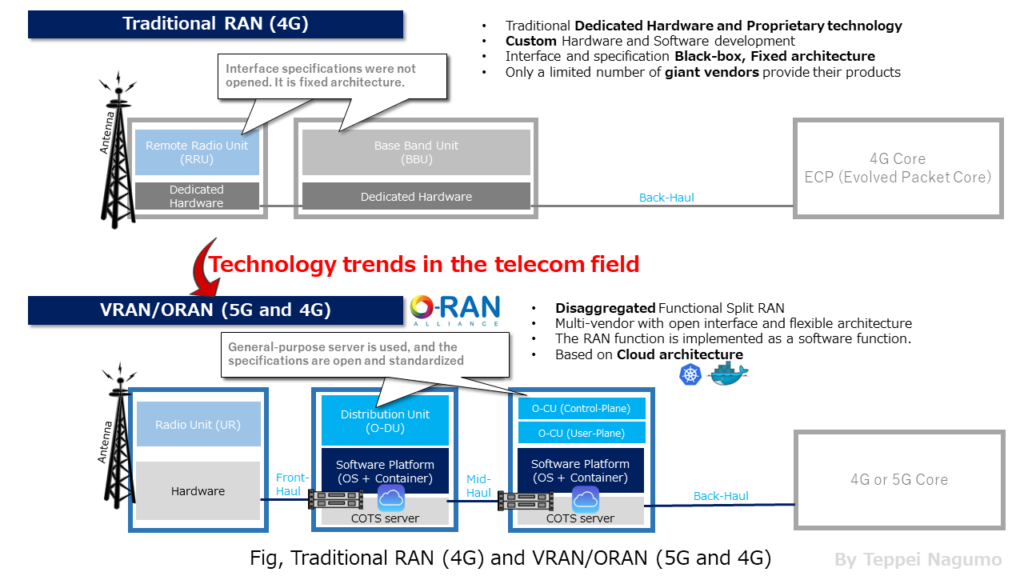
Summary
In this article, I explained the differences between Virtual-RAN (VRAN) and Open-RAN (ORAN) in mobile networks and their meanings.
If you would like to know more about 5G Network cloud native and containerization, please refer to the following article. The blog post describes from VNF (Virtual Network Function) to CNF (Cloud-Native Network Function).







コメント